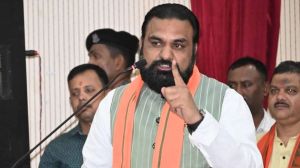Briefings: The Constitution,Afresh
Ye gods,yet another introduction to the Indian Constitution! But why not?
The Constitution,Afresh
Ye gods,yet another introduction to the Indian Constitution! But why not? The Constitution is Indias most important book. It means many things to many people,most of whom have never even seen the book. Here is a lucid and pleasantly written guide to this text which rules our lives,which should be read by every literate citizen,and which we shy away from because of painful memories of high school civics.
Madhav Khosla follows the rubric of those dreary texts,dividing his book into familiar chapter heads – separation of powers,federalism,rights and so on. But he writes in human-readable language,not the resounding argot of constitutional lawyers. With deceptive ease,and without taking sides,he addresses complex issues like the basic structure doctrine evolved in the Kesavananda Bharati case,which altered the balance of powers in the State. And he takes the reader on an entertaining journey through the case law by which the Constitution is continually re-interpreted,without being distracted by the stupefying details which usually accompany its analysis.
Khoslas book numbers among a commendable series of OUP primers on political,economic and social issues like caste,the poverty line and the environment versus trade.
Diplomatic Despatch
In the four years that Antonio Armellini served as Italian ambassador to India and Nepal,he seems to have read more on India than Indians do in a lifetime everything from Basham,Ambedkar and Khushwant Singh to present-day journalists. This wide reading has made the introduction to his copiously footnoted book translated from Italian on an increasingly assertive India a concise but crisply detailed snapshot of the country.
Armellini says that he has tried to look at India through Italian eyes,and he does begin with the influence on Indian nationalists of the literature of the Italian Risorgimento,the process of unification which lasted for a century. And he is enthused by the average Indians awareness of Italian brands like Fiat and Lambretta. But really,his impressions are international,with a European flavour.
Of particular interest are his insights on Indo-European relations,in which he ironically notes that while India is remarkably influenced by the UK for purely historical reasons,its government does not really understand how the modern European Union operates. A striking indictment,since Europe is now Indias second biggest trading partner.
Armellinis view of Indias place in the world is again European,with the possible imminence of Chindia as a major focus. Elsewhere,with respect to relations with neighbours,he calls India the elephant in a China shop,a European variant on John Bulls phrase. But what marks this book apart from the usual diplomatic despatches which find their way into bookstores is the enthusiasm with which Armellini wades into the complexities that India routinely offers,from the legacy of Partition to the long shadow cast by Naxalbari.
Biting the Bullet
The format is a laid-back picaresque account by the pillion rider of a Bullet of a meandering coast to coast journey without maps across India,from Maharashtra to Orissa and back to Goa. The story is an attempt to understand what many-tongued India is saying as it approaches a moment of crisis the Gujarat riots of 2002. Talking heads serve as found objects in building an installation that explores identity and the politics it spawns.
All the colourful citizens of India invisible are here Shiv Sainiks,police inspectors,Iranis,characters out of unwritten Manto stories,criminally beautiful village belles and a drunken,fallen RSS man in a Panjim bar. The beauty of the book is that it does not have an overt agenda,but is a deceptively simple picaresque enquiry into the soul of a country in crisis.



- 01
- 02
- 03
- 04
- 05




























